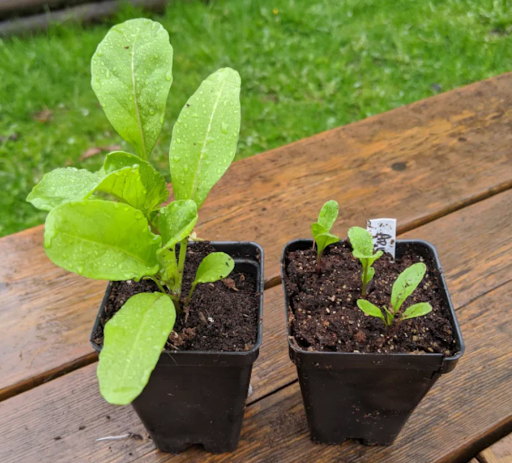Your Worm Casting Deep Dive: Learn About Worms & More.
Worm Casting Deep Dive
Worm castings are the excrement or waste product of the worm. The technical term for worm castings is vermicompost, where “vermi” means worm, and “compost” refers to the decomposition of the organic matter the worms eat. The organic matter (such as yard waste and kitchen scraps) that the worms like to chow down on is made up of the macronutrients and micronutrients that plants need in order to grow. If left in situ or heaped into the compost pile, this organic matter would be fully decomposed after 12-18 months. We gardeners like to speed up this process in a number of ways, including regular aeration of the pile and by providing microbial inoculation.
This is the point in the process where worms step in, donning their version of a super hero cape. Worms can provide both aeration and microbial inoculation, simply by being their wiggly little selves. Worms are voracious eaters, consuming half their weight in organic matter every single day! By ingesting organic matter, they break down the material physically and chemically with the help of their internal microbiome and digestive enzymes.
This “manufacturing” process that the worm endeavors and the “product” they create is unmatched by synthetic equivalencies. Worm castings are considered garden gold, due to their extensive list of benefits they provide, the safety and ease of its use in the garden, and the ecological benefit it provides to planet Earth.
BENEFITS OF WORM CASTINGS IN THE HOME GARDEN
Many scientific studies concur with anecdotal experiences by gardeners around the world; when used as a soil amendment, worm castings provide the following benefits:
BIGGER: Each individual casting is a little fertilizer pellet which helps plants grow twice their size.
HEALTHIER: The microbes that coat worm castings help plants grow healthier, much in the same way that probiotics help humans.
TASTIER: The micronutrients contained within castings provides your vegetables with the capacity to express their fullest attributes, including color, flavor and overall produce size.
WATERWISE: Worm castings can hold substantially more water than standard soil mediums, which can curtail the need for excessive watering during dry spells.
SUSTAINABLE: Worm Castings divert hundreds of thousands of pounds of waste from landfills and avoid the use of chemicals or fossil fuels in the manufacturing process.
WHY WE ADD WORM CASTINGS TO OUR SOIL BLENDS
In order to understand why worm castings work as well as they do, let’s brush up on our understanding of plant nutrition. While each plant species may need varying amounts of individual nutrients, every plant needs nutrients in order to grow. These nutrients can be divided into the following groups:
Primary Macronutrients: Nitrogen, Phosphorus, Potassium
Secondary Macronutrients: Calcium, Magnesium, Sulfur
Micronutrients: Chlorine, Iron, Zinc, Manganese, Boron, Copper, Molybdenum
In addition to the above nutrients, plants require a healthy and balanced environment to reside in. This balance is achieved through beneficial relationship with the microorganisms, bacteria and enzymes in the soil. Worm castings are special in that they contain all of these elements in tiny, organic, pelleted form. Even the most advanced fertilizer manufacturing processes pale in comparison to the powers of the humble worm.
HOW TO USE WORM CASTINGS
Worm castings provide benefits to all stages of plant growth; a gardener can make use of castings during seed starting, direct sowing, transplanting and side dressing. Want to see the proof of how powerful castings are with your own eyes? You can run a trial at home by growing the same plant with and without worm castings included in the growing medium. The results are astounding; you’ll be asking yourself why you didn’t start using them sooner! Here in an example of such a trial with Arugula:
Seed Starting
As a result of providing a healthy environment (soil medium) for the seed to grow in, you will find that germination rates will increase, and your seedlings will grow larger and healthier, faster. Simply add worm castings to an existing mix that you intend to start seeds with. We recommend adding worm castings so that the final mix contains between 10% - 33% worm castings. Using more will not burn the plants, however adding more may not provide additional benefit, as there’s only so much nutrients a seedling or plant can intake at any given stage of growth.
Direct Sowing
Worm castings are just as useful when direct sowing outdoors! Using castings in the garden couldn’t be easier; just apply as you would any other amendment to the sowing area. Add a pinch to the sowing location either before of after placing the seed, then cover according to the planting instructions for the type of seed that you are sowing.
Transplanting
When transplanting a plant start, our goal as gardeners is to minimize shock as much as possible. First, dig a hole for the seedling in the size appropriate for the root ball to fit with a little room. Sprinkle a handful of worm castings into the hole. Extract your seedling from its seed cell or container, and place it into the transplant hole. Backfill the hole with the surrounding soil, then sprinkle a handful of worm castings around the stem of the seedling. Gently massage or press in the soil to eliminate any air pockets around the roots and water thoroughly.
Side Dressing
To feed your plants throughout the season, it’s recommended that you side dress with castings every month or after a large flush of produce. You can accomplish this by digging a shallow trench near the edge of the root ball of the plant (research the specific plant to be dressed so that you know how big its root system is!) and sprinkling a line of castings into the trench. Cover or fork to incorporate the castings into the surrounding soil, and water thoroughly.









